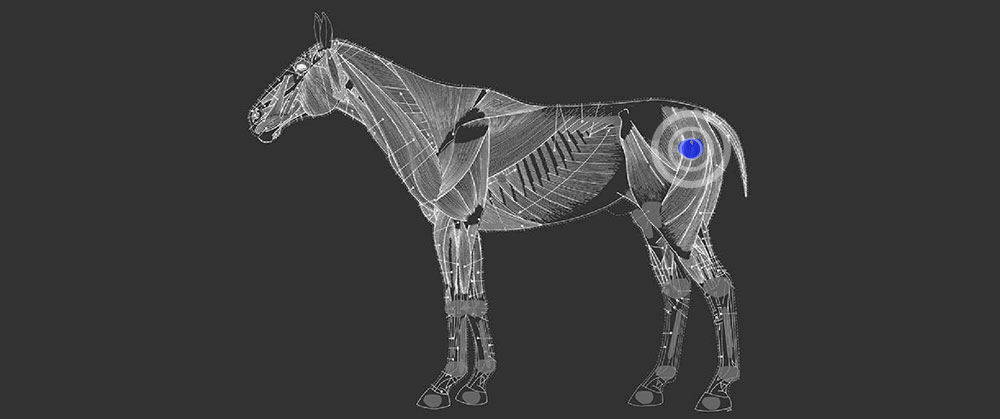Horse Hip and Pelvic Problems
Hip and Pelvic Problems


Trauma induced from falls or getting cast commonly cause inflammation (coxitis) of the hip joint which can be the start of degenerative joint disease in older horses. Pain response can be elicited locally on palpation and signs such as toe dragging, a supporting or swing leg lameness behind are seen with movement as well as a tendency to keep the hip flexed when standing.
Issues of the hip region include fractures of the pelvis, regions such as the tuber coxae, wing of the ilium, tuber ischii and the ischial shaft are common regions. The acetabulum, shaft of the ilium and pubis closer to the hip are less likely to fracture but had a more guarded prognosis for healing.
Fractures can occur at any age but are more prevalent in younger horses 6 months to 2 years where a sudden onset of hind limb lameness and pain is seen. In chronic cases lameness is associated with gluteal atrophy, this is due to nerve trauma which is restricted or cut off by scar tissue formation around nerves which travel close to bone and thus are affected by the fracture.
Diagnosis of a displaced fragment can be done rectally but tools such as nuclear scintigraphy are of more value with fractures.
Trochanteric bursitis is an issue of inflammation in the middle gluteal tendon, the trochanteric bursae and the bone and cartilage of the major trochanter of the femur. This issues is commonly associated with chronic hock or posterior gluteal seam tears as compensatory stress manifests in these deep tissues.
The acupuncture work-up can be very valuable in localizing pain from the hip and pelvic region before any of the known clinical signs manifest this is especial true with the myofascial strains which manifest before these tears and hips issues manifest. It is also important in determining how the region of the hip pain is effecting the body such as hypertonicity and pain in the mid lumbar, lumbo sacral and hindquarter regions as well as it‘s association with the lower hind limbs such as the hocks, hind fetlocks and hind feet. Further evaluation and diagnosis of the fetlock is taken on by the vet which can use diagnostic tools such as x-rays,ultrasounds, scintigraphy and nerve blocks.
Benefits of acupuncture include: